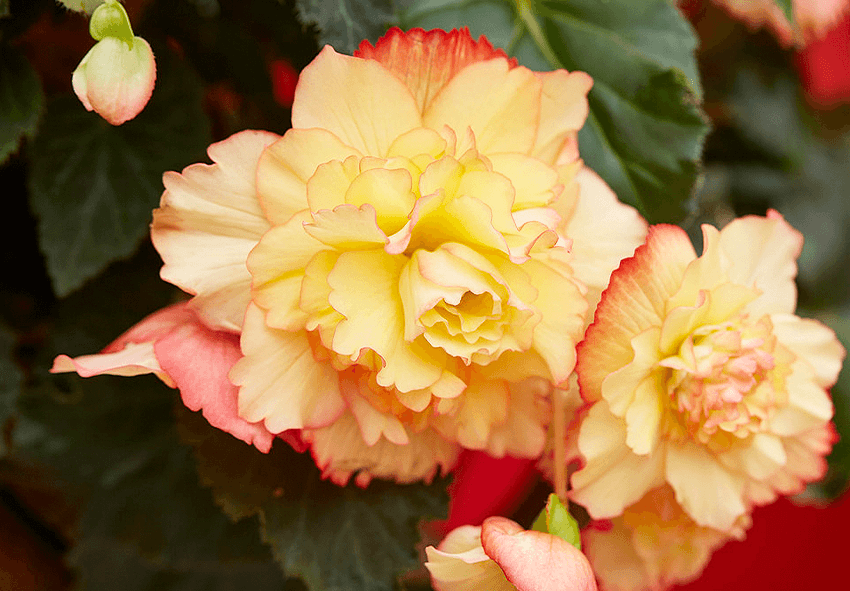If you are new to gardening, you might be wondering what annual plants are and how to grow them. Annuals are plants that complete their life cycle in one growing season, meaning they sprout, flower, produce seeds, and die within a year. They are different from perennials, which live for more than two years, and biennials, which live for two years. Annuals are a great choice for beginner gardeners because they offer many benefits and are easy to grow. In this guide, you will learn about the advantages of growing annuals, some popular annuals for beginners, how to plant and care for them, common problems to avoid, and how to design with them.
What are annual plants?
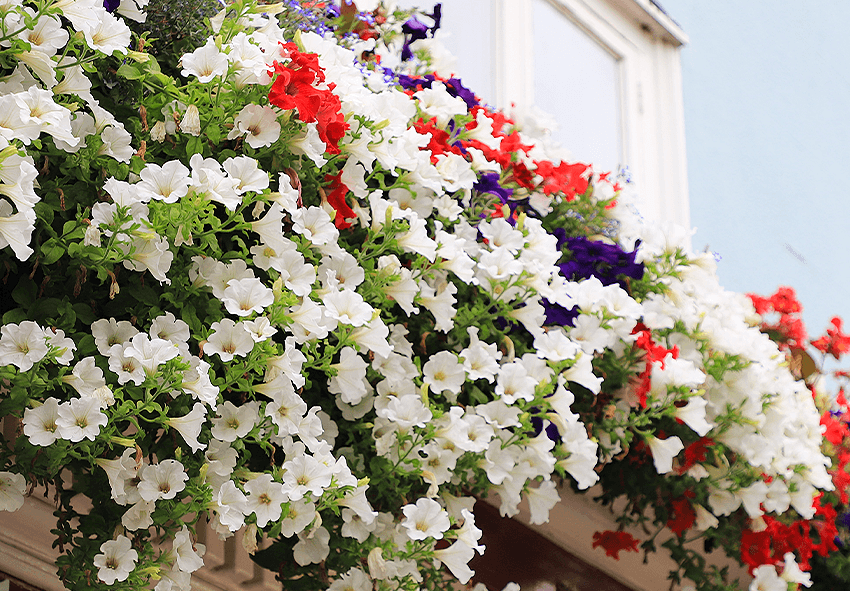
Annual plants are those that emerge from seeds, bear fruit and seeds, and then perish after just one growing season. The climate and the kind of plant determine how long the growing season lasts. While some annuals are frost-sensitive and require sunny days to thrive, others are frost-tolerant and can endure frigid temperatures. Petunias, marigolds, zinnias, cosmos, sunflowers, pansies, impatiens, and begonias are just a few examples of annual plants.
Advantages of growing annuals
Annuals have many advantages that make them appealing to gardeners of all skill levels. Here are some of the benefits of growing annuals:
- Quick growth and blooming: Annuals grow fast and bloom profusely throughout the season. They can fill up empty spaces in your garden with color and fragrance in a short time. You can also enjoy fresh flowers for cutting and arranging indoors.
- Variety of colors and shapes: Annuals come in a wide range of colors, shapes, sizes, and textures. You can find annuals that suit your personal taste and style, whether you prefer bright or pastel colors, single or double flowers, trailing or upright habits, or smooth or fuzzy foliage.
- Easy to grow and maintain: Annuals are generally easy to grow from seeds or seedlings. They do not require much pruning or dividing like perennials do. They also have fewer pest and disease problems than perennials. Most annuals only need regular watering, fertilizing, and deadheading (removing spent flowers) to keep them healthy and blooming.
- Inexpensive: Annuals are usually cheaper than perennials because they do not last as long. You can save money by growing your own annuals from seeds or by buying seedlings in bulk. You can also swap seeds or plants with other gardeners or friends.
Popular annuals for beginners
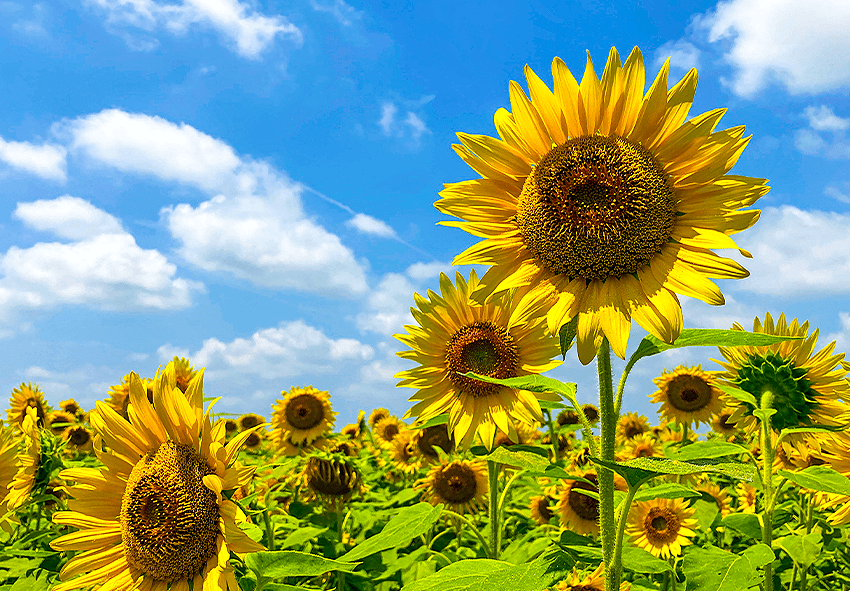
There are hundreds of annual plants to choose from, but some are easier to grow than others. Here are some of the best annual plants for beginners:
1. Petunias: Petunias are one of the most popular annuals because they are versatile, colorful, and low-maintenance. They come in many colors, shapes, and sizes, from tiny miniatures to large trailing varieties. They can grow in full sun or partial shade and tolerate drought and heat well. They look great in containers, hanging baskets, window boxes, or beds and borders.
2. Marigolds: Marigolds are cheerful flowers that brighten up any garden with their yellow, orange, red, or bicolor blooms. They are easy to grow from seeds or seedlings and can withstand heat, drought, and pests. They also have a pleasant scent that repels some insects and nematodes (worm-like parasites) that can harm other plants. They can grow in full sun or partial shade and look good in pots or mixed with other flowers.
3. Zinnias: Zinnias are showy flowers that come in a rainbow of colors and shapes. They have single or double flowers that range from small buttons to large pompoms. They are easy to grow from seeds or seedlings and bloom continuously until frost. They prefer full sun and well-drained soil and attract butterflies and hummingbirds to your garden. They make excellent cut flowers that last long in vases.
4. Cosmos: Cosmos are delicate flowers that have feathery foliage and daisy-like blooms. They come in white, pink, purple, yellow, orange, or red colors and vary in height from 1 to 6 feet. They are easy to grow from seeds or seedlings and self-seed readily. They thrive in full sun and poor soil and tolerate drought well. They add a whimsical touch to your garden and attract bees.
5. Sunflowers: Sunflowers are cheerful and iconic flowers that can brighten up any garden. They come in various sizes, from dwarf to giant, and colors, from yellow to red. They are easy to grow from seeds and need full sun and well-drained soil. They can grow up to 12 feet tall and need staking or support. They attract birds, bees, and butterflies to your garden and provide edible seeds for you and wildlife.
6. Pansies: Pansies are charming flowers that have a face-like appearance and come in many colors and patterns. They are cool-season annuals that can grow and bloom in early spring or late fall, when the temperatures are mild and the risk of frost is low. They can also overwinter in mild climates or be planted in late summer for a fall display. They prefer partial shade and moist soil and look great in containers, hanging baskets, or beds.
7. Impatiens: One of the greatest annuals for shadow is the impatiens since they thrive in low light and provide an abundance of vibrant blossoms. They are available in a variety of hues, including white, pink, red, purple, and orange, and some have variegated foliage. They require moist soil and routine fertilization and are simple to grow from seeds or seedlings. They look beautiful in pots or blended with other shade-loving plants. They can get up to 2 feet tall and wide.
8. Begonias: Begonias are another excellent choice for shade gardens, as they have beautiful flowers and foliage that can brighten up any dark corner. They come in many types, such as wax begonias, tuberous begonias, rex begonias, or angel wing begonias, each with its own characteristics and preferences. They are easy to grow from seeds, tubers, or cuttings and need well-drained soil and moderate watering. They can grow up to 3 feet tall and wide and look good in containers or beds.
How to plant annuals
Planting annuals is not difficult, but it requires some planning and preparation. Here are some steps to follow for planting annuals:
- Choosing the right location: Annuals need different amounts of light depending on their type. Some prefer full sun (at least six hours of direct sunlight per day), some prefer partial shade (four to six hours of sunlight per day), and some prefer shade (less than four hours of sunlight per day). Check the plant labels or seed packets for the light requirements of your annuals and choose a location accordingly. You can also use a sun calculator to measure how much sun your garden gets throughout the day.
- Preparing the soil: Annuals need well-drained soil that is rich in organic matter and has a pH between 6.3 and 6.7. You can improve your soil by adding compost, peat moss, or other amendments before planting. You can also use a soil test kit to check the pH and nutrient levels of your soil and adjust them if needed. You can also add a slow-release fertilizer to the planting hole to give your annuals a good start.
- Planting seeds or seedlings: You can grow annuals from seeds or seedlings (young plants). Seeds are cheaper and offer more variety, but they take longer to germinate and grow. Seedlings are more expensive and have fewer choices, but they are ready to plant and bloom sooner. You can start your own seeds indoors or buy them from a nursery or garden center. To plant seeds, follow the instructions on the seed packet for sowing depth, spacing, and timing. To plant seedlings, gently remove them from their containers without pulling on the stems. Dig a hole large enough to accommodate the root ball and place the plant in it. Firm the soil around the plant and water well.
- Watering and fertilizing: Annuals need regular watering, especially during hot and dry weather. Water deeply and thoroughly, soaking the soil to a depth of 6 to 8 inches. Avoid wetting the foliage, as this can cause fungal diseases. Water in the morning or evening, not in the middle of the day when the sun is strong. Check the soil moisture frequently and water when it feels dry to the touch. You can also use a mulch around your annuals to conserve moisture and prevent weeds. Annuals also need regular fertilizing, as they use up a lot of nutrients during their short life span. Use a balanced fertilizer (such as 10-10-10) every two to four weeks during the growing season, following the label directions for application rates and methods. You can also use an organic fertilizer (such as fish emulsion or compost tea) for a more natural approach.
- Deadheading and pruning: Deadheading is the process of removing spent flowers from your annuals. This encourages them to produce more blooms and prevents them from setting seeds prematurely. To deadhead, simply pinch off or cut off the faded flowers with your fingers or scissors. Do this regularly throughout the season to keep your annuals looking fresh and colorful. Pruning is the process of cutting back or shaping your annuals to improve their appearance or health. Some annuals may become leggy, overgrown, or diseased over time and need some pruning to restore their vigor and beauty. To prune, use sharp and clean scissors or pruners and cut back any unwanted or damaged stems or leaves. Do this sparingly and only when necessary, as too much pruning can reduce flowering.
Common problems with annuals
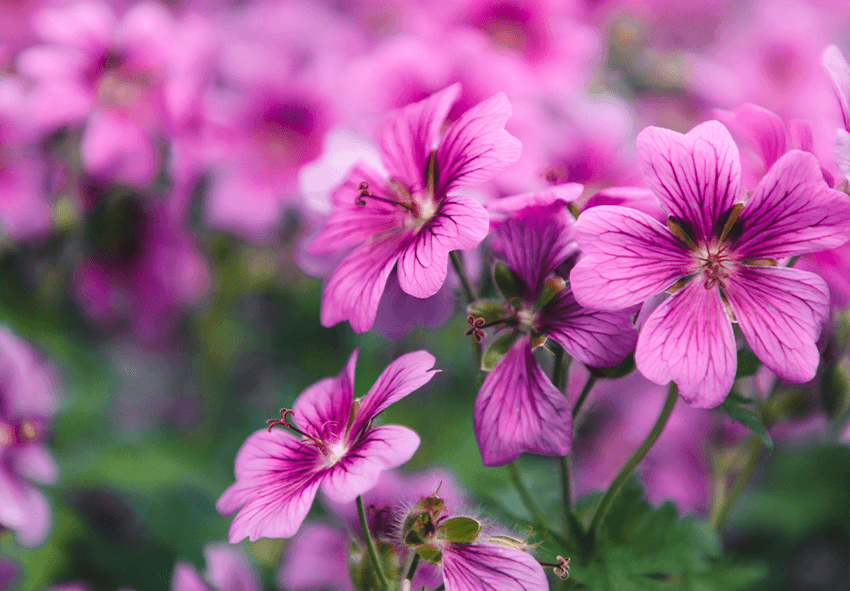
Annuals are generally easy to grow and maintain, but they may encounter some problems along the way. Here are some of the common problems with annuals and how to prevent or treat them:
Annuals may be attacked by various insects or diseases that can damage their leaves, stems, flowers, or roots. Some of the common pests include aphids, spider mites, whiteflies, caterpillars, slugs, snails and beetles. Some of the common diseases include powdery mildew, rust, leaf spot, blight, wilt, and rot. To prevent or reduce pest and disease problems, choose healthy and resistant plants or seeds, avoid overcrowding or overwatering your annuals, remove any infected or infested plants or parts promptly, rotate your crops every year if possible, and use organic or chemical controls if needed.
Watering annuals frequently is necessary, especially in hot and dry weather. However, your plants may experience issues if they receive too much or too little water. Root rot, fungi, and nutrient leaching can all be caused by overwatering. Wilting, slowed growth, and lessened blossoming can all result from underwatering. Water deeply and thoroughly, soaking the soil to a depth of 6 to 8 inches, to avoid these issues. As watering the leaves might lead to fungus illnesses, avoid doing so. Drink your water in the morning or the evening, not in the heat of the day. Water when the soil seems dry to the touch and check the soil moisture often. Additionally, you can use mulch to keep weeds at bay and retain moisture around your annual plants.
Annuals need well-drained soil that is rich in organic matter and has a pH between 6.3 and 6.7. Poor soil conditions can affect the health and performance of your plants. For example, compacted soil can restrict root growth and water drainage. Sandy soil can drain too quickly and lose nutrients. Clay soil can hold too much water and cause root rot. Acidic soil can limit nutrient availability. To improve your soil conditions, you can add compost, peat moss, or other amendments before planting. You can also use a soil test kit to check the pH and nutrient levels of your soil and adjust them if needed. You can also add a slow-release fertilizer to the planting hole to give your annuals a good start.
Annuals need different amounts of light depending on their type. Some prefer full sun (at least six hours of direct sunlight per day), some prefer partial shade (four to six hours of sunlight per day), and some prefer shade (less than four hours of sunlight per day). Lack of sunlight can cause your plants to become leggy, weak, pale, or prone to pests and diseases. It can also reduce flowering and color intensity. To avoid this problem, choose annuals that suit your light conditions and plant them accordingly. You can also use a sun calculator to measure how much sun your garden gets throughout the day.
Annuals for different seasons
As long as you pick the appropriate annuals for each season, annuals may add color and interest to your garden throughout the whole year. While some annuals are frost-sensitive and require warm conditions to thrive, others are frost-tolerant and can endure cold temperatures. Here are a few illustrations of annuals for various seasons:
- Cool-season annuals: These annuals can develop and bloom in the moderate temperatures of early spring or the low risk of frost in late fall. They can be planted in the late summer for a fall show or overwinter in warm areas. Pansies, snapdragons, kale, violas, primroses, calendula, and sweet peas are a few examples of cool-season annuals.
- Warm-season annuals: These are annuals that need warm temperatures and long days to grow and bloom. They are usually planted in late spring or early summer, after the danger of frost has passed, and they last until the first frost in fall. They can also be grown indoors as houseplants or in greenhouses. Some examples of warm-season annuals are petunias, marigolds, zinnias, impatiens, begonias, geraniums, and salvia.
- Fall annuals: In the late summer and early fall, when many other plants begin to fade, these annuals can add color and texture to your garden. They can survive a few cold nights and light frosts, but once the temperature drops below freezing, they will perish. For a festive touch, they can also be planted in window boxes or containers. Mums, asters, pansies, decorative peppers, decorative cabbage, and celosia are some examples of autumn annuals.
Designing with annuals
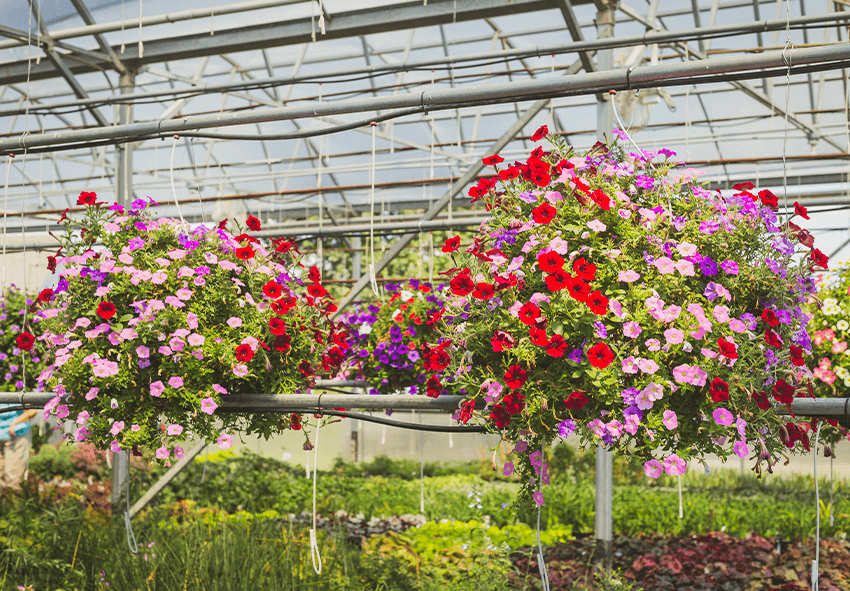
Annuals can add personality and beauty to your garden with their vibrant colors, textures, and forms. You can use annuals to create different effects and moods in your garden, such as a cottage garden, a tropical paradise, or a formal border. Here are some tips for designing with annuals:
- Annuals come in a wide range of colors and textures, so you can mix and match them to create different combinations and contrasts. You can use a color wheel to help you choose colors that harmonize or contrast with each other. For example, you can use complementary colors (opposite on the color wheel) for a striking contrast, such as purple and yellow or red and green. You can also use analogous colors (next to each other on the color wheel) for a harmonious blend, such as pink and purple or blue and green. You can also use different textures to add interest and variety to your garden. For example, you can combine smooth and fuzzy foliage, or single and double flowers, or trailing and upright habits.
- Annuals can enhance the appearance of your existing perennials and shrubs by filling in the gaps, adding color, or creating focal points. You can plant annuals in front of, between, or behind your perennials and shrubs to create layers of color and height. You can also use annuals to highlight the features of your perennials and shrubs, such as their foliage, bark, or berries. For example, you can plant white impatiens around a dark-leaved heuchera, or yellow marigolds around a red-stemmed dogwood.
- Annuals are ideal for growing in containers and hanging baskets, as they can provide instant color and impact. You can use containers and hanging baskets to decorate your porch, patio, balcony, or entrance. You can also move them around to change the look of your garden or to follow the sun. When planting annuals in containers and hanging baskets, you can follow the thriller-filler-spiller formula: use a tall or dramatic plant as the thriller (the focal point), use mounding or bushy plants as the fillers (the background), and use trailing or cascading plants as the spillers (the edge). For example, you can use a purple fountain grass as the thriller, white petunias as the fillers, and silver licorice plant as the spillers.
- Annuals are excellent for growing flowers in a cutting garden where you can make bouquets and arrangements. You can have a cutting garden as a separate bed or as a component of your current garden. You can select annuals that have flowers that suit your style and preferences, whether they are long-lasting, fragrant, or colorful. Zinnias, cosmos, sunflowers, snapdragons, larkspur, sweet peas, and celosia are a few examples of annuals that can be cut. For simple access and harvesting, you can plant your annuals in rows or blocks when creating a cutting garden. To give your bouquets more texture and contrast, you can also plant some foliage plants, such as dusty miller, coleus, or eucalyptus.
Conclusion
Annuals are great plants that may provide color, scent, and interest to your garden all year. They are simple to cultivate and care for, and they provide a broad range of options for every season and style. Annuals may help you reach your gardening objectives whether you want to produce a magnificent show in your beds and borders, a delightful accent in your containers and hanging baskets, or a fresh supply of flowers for cutting and arranging. Try planting some annuals in your yard to appreciate their beauty and advantages.
Additional Resources
If you want to learn more about annuals and how to cultivate them, check out the following resources:
- Gardening websites and forums: Garden Design, Fine Gardening, ProFlowers, Costa Farms, HowStuffWorks, and many more websites provide a wealth of knowledge, suggestions, guidance, and inspiration. You may also join online gardening forums where gardeners share their expertise and experiences with annuals and other plants.
- Gardening books for beginners: You can also learn from books that cover the basics of gardening and annuals, such as The Flower Gardener’s Bible by Lewis Hill and Nancy Hill, Annuals for Every Garden by Scott D. Appell, The Well-Tended Perennial Garden by Tracy DiSabato-Aust, and The Complete Guide to Annuals by Better Homes & Gardens.
- Local gardening clubs and classes: Joining a local gardening club or taking a gardening lesson in your region might also be beneficial. You may meet other gardeners who can give you advice and encouragement, as well as plants and seeds that you may not be able to get elsewhere. You may also attend events and activities to enhance your gardening experience.
Frequently Asked Questions (FAQs) about Annual Plants
1. What Are Annual Plants?
Annual plants are a category of plants that complete their life cycle in just one growing season. This means they germinate from seeds, grow, flower, produce seeds, and then die all within the span of a year. Unlike perennial plants that return year after year, annuals need to be replanted each season. They are known for their vibrant and showy blooms, making them a popular choice for gardeners who want to add color and variety to their landscapes. Some common examples of annual plants include petunias, marigolds, zinnias, and sunflowers.
2. How Do I Care for Annual Plants?
Caring for annual plants involves several key steps. First, choose a suitable location with the right amount of sunlight for the specific type of annual you’re growing. Most annuals prefer full sun, but some tolerate partial shade. Next, ensure the soil is well-draining and amend it with compost or organic matter for improved fertility. Water your annuals consistently, keeping the soil evenly moist but not waterlogged. Regular deadheading (removing spent flowers) can encourage more blooms. Finally, consider fertilizing your annuals with a balanced, water-soluble fertilizer to promote healthy growth and flowering.
3. Can I Order Dutch Annual Plants from Your Online Store?
Yes, you can order annual plants from our online store. We offer a wide variety of annuals in different colors and sizes to suit your gardening needs. Ordering online provides the convenience of selecting your favorite annuals from the comfort of your home and having them delivered to your doorstep. Our online store is a reliable source for high-quality annual plants, and we often provide detailed information about each plant’s care requirements to help you succeed in growing them.
4. Do Annual Plants Require Special Pruning?
In general, annual plants do not require extensive pruning like some perennials or shrubs. However, deadheading (removing spent flowers) is beneficial for many annuals. This encourages the plant to produce more blooms and keeps it looking neat and tidy. Additionally, you can trim back leggy or overgrown annuals to promote a bushier growth habit. It’s a good practice to read up on the specific care requirements of the annual plants you have, as some may have unique pruning needs.
5. Can I Save Seeds from Annual Plants for Next Year?
While annual plants are known for their one-year life cycle, you can save seeds from many annuals to grow new plants in the next season. To do this, allow the flowers to go to seed and then collect the seeds once they have matured and dried on the plant. Store the seeds in a cool, dry place until the following spring, when you can plant them again. Keep in mind that some hybrids may not come true from seed, so if you want to maintain specific characteristics, it’s best to purchase new seeds or plants each year.
Published: 24.04.2023

